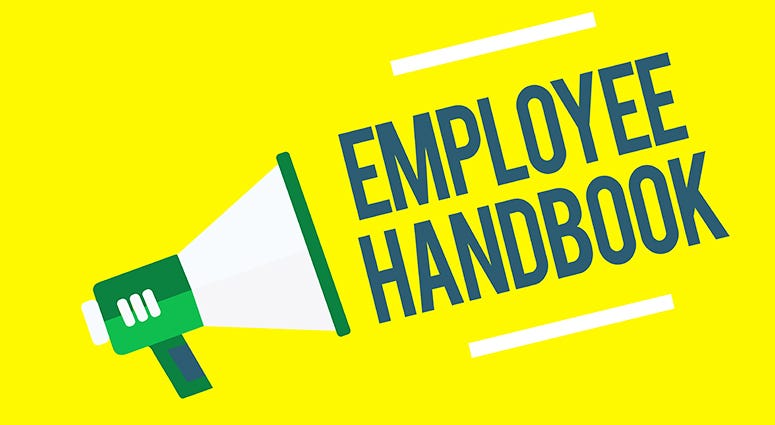
Regardless of industry, location or size of your business, defining specific employee expectations is beneficial for both your company and employees. Employee handbooks should be created as soon as business begins, ideally before employees start their jobs. It is easier to establish policies before you need them rather than trying to fix things after an employee situation goes south.
1. The employee handbook is an introduction to your company, so spell it out. This is who we are, this is our target audience and this is how you can be a part of it. Even employees whose roles do not involve top tier decision making do not want to function in a vacuum. Understanding the mission, culture and goals of the organization helps everyone.
2. A clear policy about unscheduled absences or tardiness is important. Ambiguous or undefined attendance guidelines can lead to problems. The best, most productive employee in the world does the company no good if they aren’t there and the impact of having one less person on the job is even greater for a small business.
3. Industry and job-specific guidelines should be documented, particularly regarding safety issues, work environments and any related dress codes. For example, positions on food service or preparation may require non-skid shoes, hair nets and the regulated use of disposable gloves. It’s important for everyone to understand that OSHA and other federal standards apply to everything from office chairs to structured breaks and meal periods.
4. Compensation policies are clearly important for successful recruitment, performance and retention of employees. Printed or online manuals are not necessarily the place to list a specific employee’s rate of pay—that may be more appropriate for new-hire paperwork—but company-wide policies should be defined. Compensation rules may include a description of exempt vs. nonexempt positions, 401K participation, health benefits, disability, life insurance, overtime pay guideline, paid sick leave and vacation or flex time accrual and use.
5. Workplace harassment has been getting increased attention and scrutiny. Businesses need to be diligent when addressing such issues. Employee handbooks should include clear guidelines for acceptable on-the-job behavior and communication, including reporting procedures, legal definitions and opportunities for training.
6. Confidentiality, corporate image, proprietary information and appropriate antitrust requirements should all be detailed in your employee handbook. Policies regarding employee departures and interactions with competitors can be crucial and need to be clearly communicated before any issues arise. Be sure to also include codes of conduct regarding internet use, including social media. Some businesses use IT to block access to certain types of websites while others rely on the personal judgment of their staff. Guidelines are important in either case. Employees should also be made aware of possible repercussions if they discuss their job or the company on personal social media accounts.